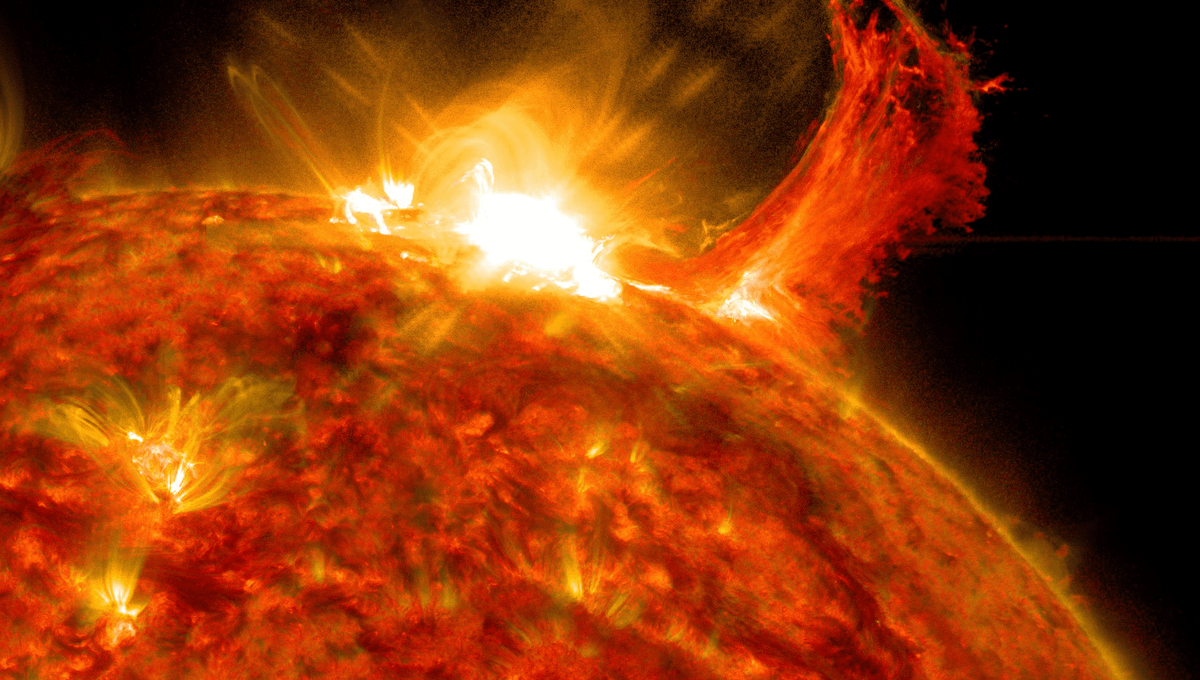
Efforts to predict when solar outbursts will affect the Earth are frustratingly imprecise, but NASA expects them to get a little better. An AI system is now processing data from satellites to warn of solar storms powerful enough to damage vital infrastructure.
If you’ve ever wondered what you would do if you had a day before a global catastrophe, you might want to shorten your timeline, just to be prepared. Not that the solar storms NASA hopes it can now predict with 30 minutes warning are going to destroy the Earth or anything that dramatic, but they do involve the (small) risk of events that could put civilization under a lot of strain.
It is perhaps not surprising that scientists still have little ability to predict when major solar storms will occur. Indeed, even our capacity to forecast average activity levels in a solar cycle remains poor. We might expect, however, that once storms occur it would be easy to tell whether and when they would hit the Earth’s magnetic field, triggering Geomagnetically Induced Currents (GICs). GICs can wreak havoc on anything long, thin, and metallic – including electrical technology, oil pipelines, and railways.
Such capabilities give us plenty of opportunity to prepare in the 2-3 days it takes the charged particles associated with coronal mass ejections (CMEs) to cross the Earth-Sun distance and affect our world. Instead, however, predictions remain very hit-and-miss, even after we witness giant flares. The epic auroras of March 23, for example, took us by surprise – with expectations that night would be a gentle lead-up to a large event the following evening.
Missing out on the wonder of the polar lights may be sad, but it’s minor compared to the consequences of not being ready for an event that could crash the internet and destroy the electricity grid, at least temporarily.
The quest for warnings of events like this led NASA, the US Geological Survey, and the US Department of Energy to come together to develop a deep learning program to recognize patterns in solar wind activity. The Deep Learning Geomagnetic Perturbation computer model, now named DAGGER, is the result. DAGGER’s capabilities have been described in a recent paper.
However, it depends on solar wind activity close to Earth, rather than as it first leaves the Sun, offering just thirty minutes warning, updated every minute.
“With this AI, it is now possible to make rapid and accurate global predictions and inform decisions in the event of a solar storm, thereby minimizing – or even preventing – devastation to modern society,” said Vishal Upendran of India’s Inter-University Center for Astronomy and Astrophysics in a statement.
The authors verified DAGGER’s capacities by feeding it data from prior to the August 2011 and March 2015 geomagnetic storms. In both cases, DAGGER not only predicted an impact, but also the size and where on the Earth the effects would be felt.
If you don’t remember these events, it’s because neither was all that disastrous. However, we don’t have detailed solar storm data from 1989 – let alone 1859 – to test how well DAGGER would perform when faced with a really serious outburst from the Sun.
The advantage of deep learning, however, is that the more data it gets to process, the better its predictions become. Every non-threatening storm we experience before a big one will improve DAGGER’s capacity to perform when it matters.
Combined with the increased capacity to observe the solar wind at source, DAGGER might be a stepping stone to even longer warning periods. Maybe then, as well as giving system operators a chance to put their charges into safe mode, the rest of us could live out our pre-apocalypse party plans.
The study of DAGGER’s performance is published open access in the journal Space Weather.
Source Link: NASA’s DAGGER Should Give 30 Minutes Warning Of Catastrophic Solar Storms